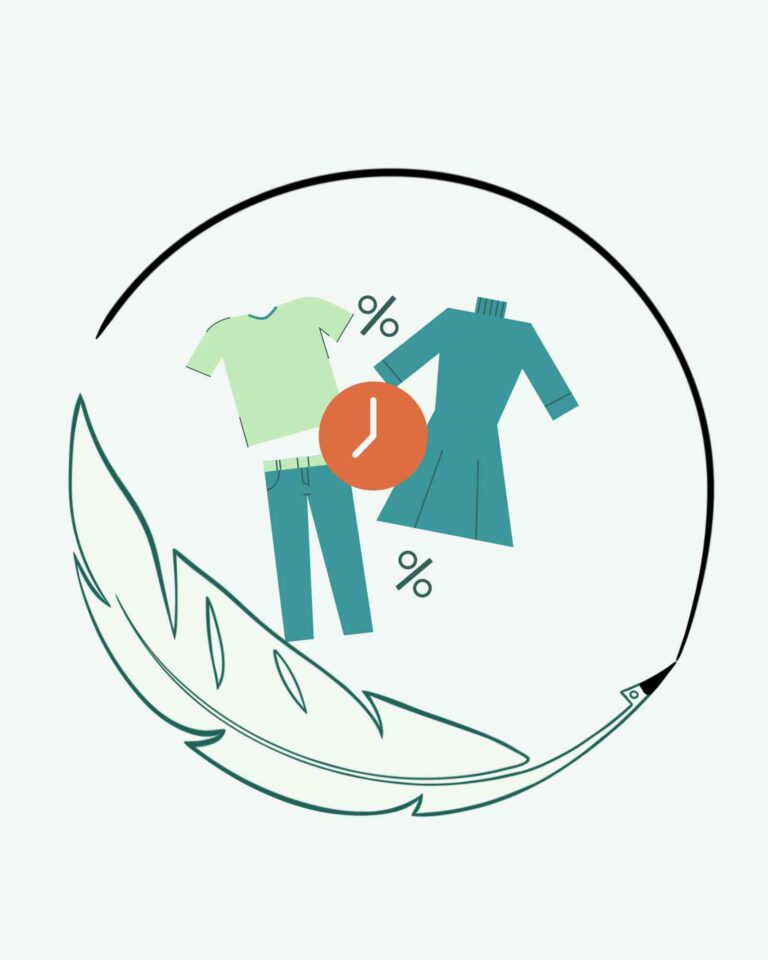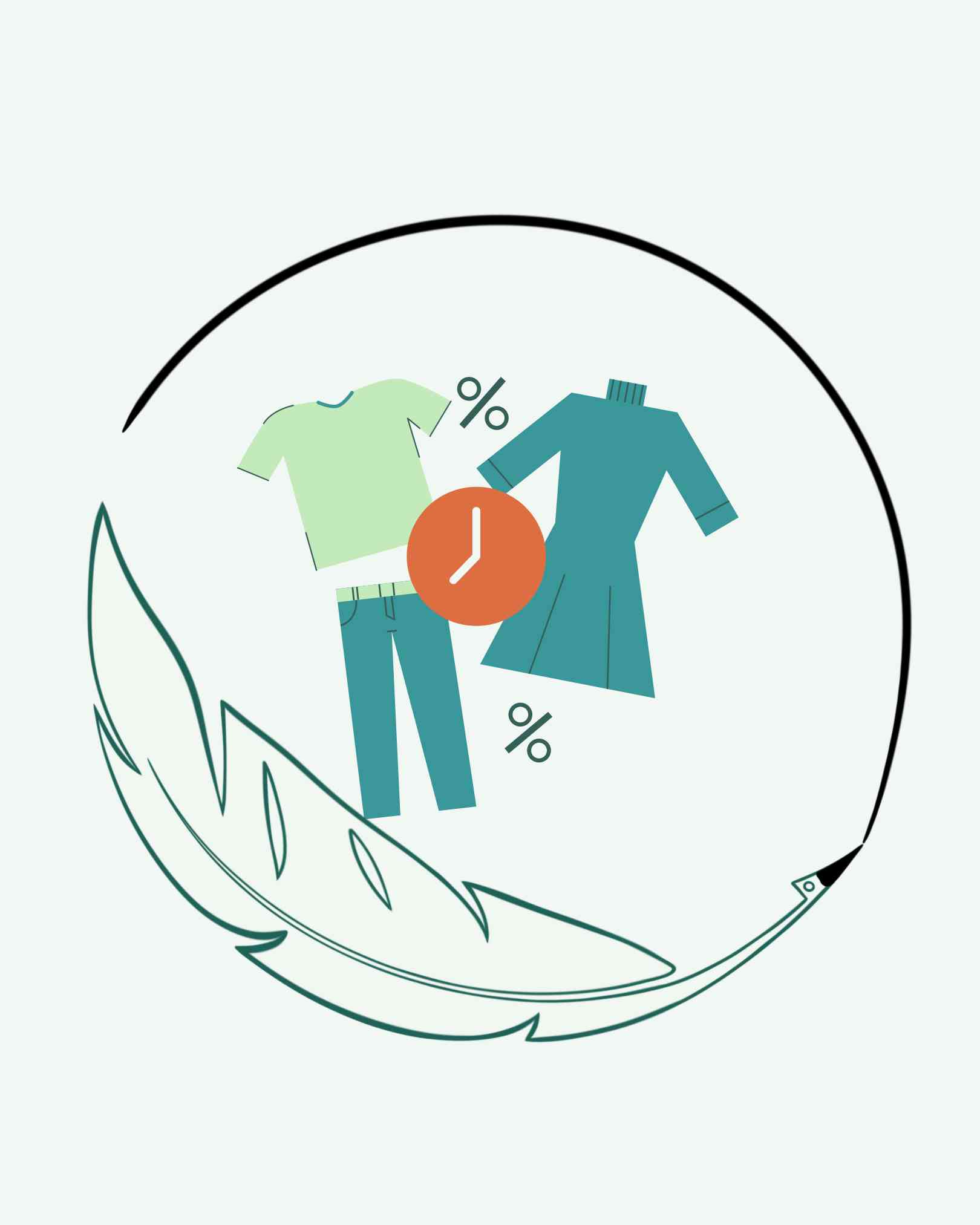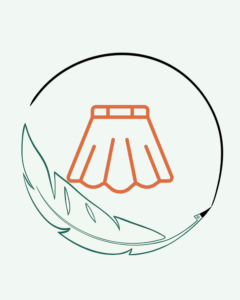Fast Fashion: Enough Already is not a rebellion, but a definition, followed by personal experiences and recommendations. In this article, I will discuss the effects of the fast fashion definition from its first appearance to the present day, its negative consequences and how we can individually take steps against this situation. We will discover together how we can make a transition to a sustainable fashion concept by making conscious choices without drowning in the fast consumption cycle in the fashion sector.
The fast fashion definition emerged in the 1970s when retailers began to export their production to countries in Asia where they could pay lower prices than in Western countries. As companies accelerated production to keep up with trends, new clothing collections released 4 times a year in the 2000s increased to 36 collections for some brands. When I think of collections released 4 times a year, I think of the special fashion shows held in luxurious workshops of major world brands; the collection release process that was meticulously prepared and worked on for months has almost disappeared. As the fast fashion definition grew, brands completely changed their corporate strategies under the pretext of trying to meet the needs of consumers.
How did fast fashion change brand strategies?
1.Fast production and the fast consumption cycles that develop accordingly
Brand behavior determines consumer behavior and subsequently consumer behavior determines brand behavior. This cycle continues in this way. As brands offer their new collections to consumers one after another, consumers wait less for new products and always look for the new.
2.Low cost and high volume
Brands shifted their production to countries with low-wage labor in order to keep costs low. Accordingly, they gained a cost advantage by producing high-volume production. Low-cost production enabled the launch of more affordable products, which in turn increased the consumer base of brands.
3.New trends
With the development of technology and social media at the center of our lives, brands avoided taking risks by producing similar products to those preferred. This avoidance actually caused the sameness rather than the products that designers working in the fashion sector would create with their creative intelligence. The sameness of brands, products and consumers…
4.Low quality
The concepts of fast production and low cost in production that came with the fast fashion trend did not only emerge by reducing the labor cost. There has been a visible change in the strategies of the brands and a change that has been accustomed to by the consumers over time. The lifespan of the products has shortened, they have become worn out and obsolete faster.
A Reality Emerged with the Concept of Fast Fashion: Short-Life Products and Low Quality
Following the concept of fast fashion, the lifespan of the products produced has shortened and brands have started to completely ignore quality by reducing it over time in order to reduce costs. Fast fashion brands preferred to use the cheapest materials to make low-cost production. Synthetic fabrics such as polyester, nylon and acrylic started to be widely used because they were cheaper than natural fibers. However, these synthetic materials had properties that were less durable and wore out quickly over time. Moreover, since they completed their lifespan quickly, they had to be recycled quickly, but can such a short-life material cycle exist? We already know that recycling reduces the quality of the main material. So how environmentally friendly choices were the brands making with this strategy they followed to earn more? The answer to this question is an enigma, in our opinion, they were acting without thinking about the environment. While it was a great success that the company made a profit, of course they did not focus on the negative consequences.
Negative effects of fast fashion:
Low Quality Raw Material: 60% of the fabrics used in global clothing production are synthetic and these materials are not biodegradable.
Sloppy Workmanship: 85% of fast fashion clothes are thrown away within the first 6 months.
Environmental Pollution: The fashion industry is responsible for 10% of global carbon emissions and produces 92 million tons of textile waste every year.
High Carbon Emissions: Synthetic fabrics produce 50% more carbon emissions than natural materials like cotton or wool.
Increasing Amount of Waste: Approximately 85 billion garments are produced every year, a large portion of which goes to waste.
Worker Exploitation: A textile worker in Bangladesh earns an average of $3 per day and most workers work 96 hours per week.
Fast Fashion Cycle: Fast fashion brands release 12 to 36 new collections per year.
Poor Quality Accessories: It has been reported that 70% of clothes have buttons or zippers that break within the first 3 uses.
Lack of Sustainability: Only 1% of the fashion industry has adopted the circular economy.
Donation and Second Hand Challenges: 84% of donated clothes are sent directly to the trash because they are not suitable for sale.
So the only positive figure and rate that comes with fast fashion is the brands’ profits. Don’t you think it’s enough?
Fast Fashion: Enough Already
The only thing we consumers need to learn is not the brands’ profits but the amount of waste, carbon emissions, low quality and violations of workers’ rights they cause. If I have to give an example from myself, my experience is that this rate is increasing day by day. I can now wear a product I bought from H&M 10 years ago, but why can’t I wear a product I bought 1 year ago? When we question our own lives and choices, a confrontation begins. Facing the truth…
Enough already, I don’t want to be deceived as a consumer. A product that has completed its life with me should not be worn out or damaged. It should no longer match my tastes and the product should not leave my life on its own, I should bid it farewell by selling it as second-hand, upcycling or donating it. Is this a very romantic approach, no I don’t think so. The products we buy with pleasure and enthusiasm, and sometimes wait for months for the stock to arrive, can now become products we don’t like. Why do products that we buy with such pleasure and enthusiasm go to waste without value? All the big retail stores in the fashion sector are the ones causing this waste. So, enough already.
When we think about the big picture, all the choices we make individually may seem worthless to us, this is normal. But the truth is not, every learned truth is a seed of collective consciousness. The seed planted grows as we water it. As we learn and change our choices, our environment also learns and then their environment too, and this ignites the spark of an endless cycle.
Let’s ignite the spark of this cycle today!
Let’s enter a renewal cycle every new season:
Let’s sell or rent the clothes we don’t like anymore from applications such as Dolap in Turkey and Vestiaire in the world.
When we want to add new products to our closet this season, it is possible to protect both our pockets and our nature by making lower-cost choices, let’s prefer second-hand shopping or renting.
Let’s increase the demand for quality raw materials by choosing boutique brands.
Let’s get support from local tailors to transform the products we don’t like into products we like by learning upcycling.
Let’s donate, if you look after it well enough, there is always someone in need.
Let’s support recycling, get to know the waste collection points of the municipalities and send the waste we separate to recycling correctly.
While brands strive to release 36 collections a year, can you imagine what would happen if we reviewed our choices 4 times a year and ignited the spark of this cycle?
I can think, that’s why I say enough already for fast fashion. I entered a renewal cycle of my closet and sold 8 second-hand products in 10 days. It is a great pleasure to deliver products that have reached their end-of-life to their new owners who will use them with enthusiasm. Supporting slow fashion and sustainability is also a joy that will last a lifetime.
Fast Fashion Out, Slow Fashion In
Fast fashion has radically changed our consumption habits and has created many negative environmental, economic and social effects. However, taking action against these negativities, reconsidering our individual choices and adopting a sustainable lifestyle is an opportunity in the hands of us consumers. The personal experiences and advice I share in this article can be the starting point for realizing the problems brought by fast fashion and finding ways to cope with these problems.
Remember, small changes can make big differences. Each of our contributions can raise social awareness and be a ray of hope for a more sustainable fashion world. Let’s break this cycle together and make more conscious and environmentally friendly choices. Initiating a radical change in our fashion and consumption habits will be the most valuable step for both ourselves and our planet.
By supporting slow fashion and sustainability, we can contribute to the future of both fashion and our planet. If we act with this awareness in every new choice we make, we will have taken an important step towards creating a more just and balanced world. Remember, the biggest threat to our planet is the belief that someone else will save it.







